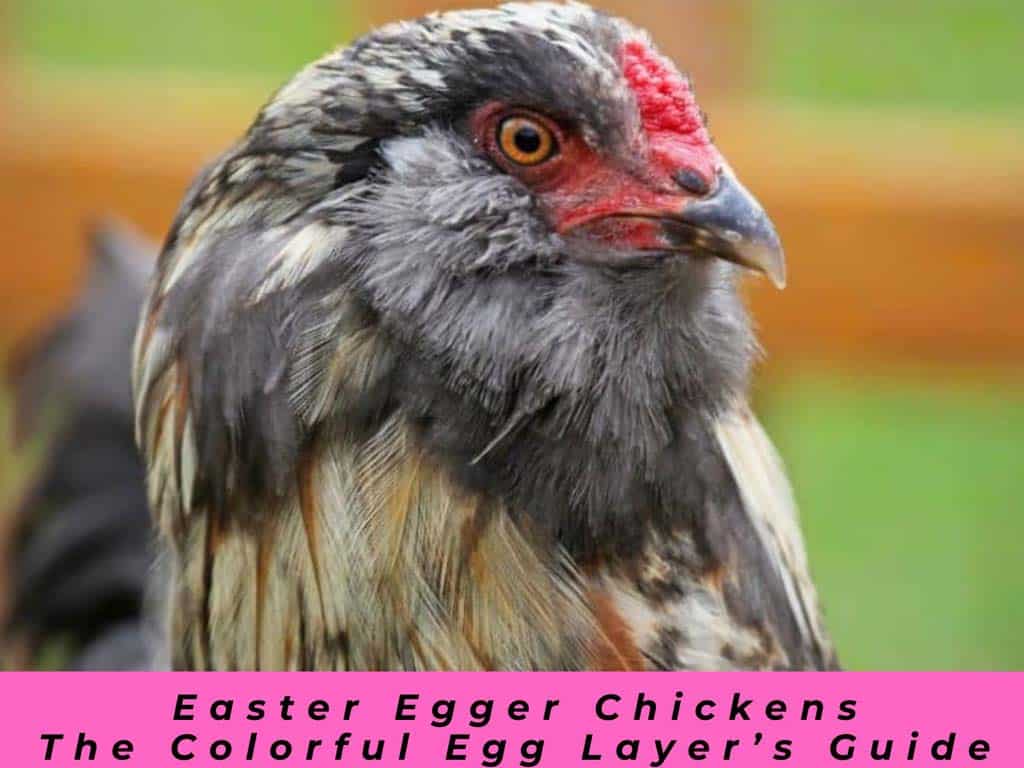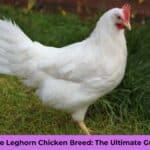Easter Egger Chickens are a hybrid breed beloved by backyard chicken keepers in the USA, known for their friendly nature and ability to lay multicolored eggs.
Unlike purebred chickens with defined traits, Easter Eggers vary widely in appearance and egg colors, making each bird unique.
They are fun to watch and are often called a “quirky chicken” due to their playful poultry personalities and traits like poofy cheeks and beards.
Easter Eggers add color not only to your flock but to your egg basket as well, producing blue, green, pink, and tan eggs in a natural rainbow.
Part of what makes Easter Eggers so popular is their adaptability. They are hardy, low-maintenance birds that thrive in different climates, from hot and humid to cold and windy.
This hardy chicken breed can make a great addition to any backyard flock due to its easy-going nature, egg-laying capacity, and diversity.
Whether you are new to raising chickens or an experienced chicken keeper, Easter Eggers offer both practicality and charm, making them one of the top choices among backyard chicken keepers across the USA.
Easter Egger Chicken Breed Origins
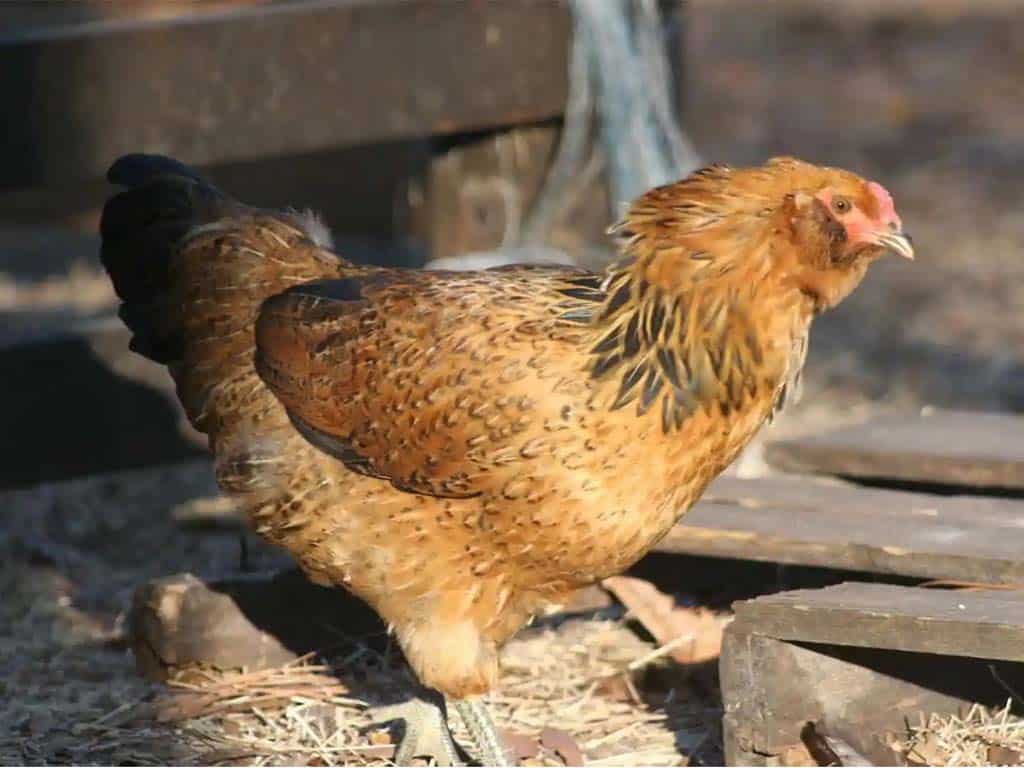
The Easter Egger breed is a genetic mix stemming from ancient South American breeds like the Araucana and Ameraucana, both known for their blue eggs. In fact, Easter Eggers carry genes from these ancestral chickens, often combining traits from these breeds. While Araucanas have unique ear tufts and are often rumpless (missing a tail), Ameraucanas are known for their pea comb and smaller body. Easter Eggers combine traits from both but don’t adhere to any breed standard, allowing for a broad diversity in appearance and egg color.
Originally, Easter Eggers were developed to create a hybrid bird that could lay a rainbow of colored eggs. Unlike heritage breeds that maintain traditional traits, Easter Eggers are bred for their unique mix of colors and chicken personalities. Because of this breed diversity, they are not considered a true breed but rather a hybrid, meaning each flock of Easter Eggers can look completely different from another, even if they have similar egg colors. This mixed-breed chicken brings novelty and variety, which is why they remain a favorite among backyard poultry owners today.
Check this out Do Crows Eat Other Birds? The Disturbing Truth
Physical Characteristics and Appearance
Easter Egger Chickens come in all shapes, sizes, and colors, making them one of the most visually diverse poultry breeds available. They commonly have poofy cheeks and beards, which adds to their unique charm, and their feathers can be nearly any color, including blue, brown, tan, speckled, and white. Some Easter Eggers may have bare legs while others may show red wattles, giving each chicken a distinct look. Pea combs are common, as they are linked to their Ameraucana heritage.
Adult hens weigh around 4 pounds and roosters about 5 pounds, making them smaller than standard meat chickens. Their feather colors and patterns vary from bird to bird, and this genetic diversity means that no two Easter Eggers look exactly alike. With this range of appearances, Easter Eggers are often compared to other chicken varieties like Plymouth Rock or Campine, which also show great diversity in plumage but don’t have the same colorful egg output. This unique breed diversity in both appearance and egg color makes Easter Eggers exciting for both novice and experienced poultry keepers.
Easter Egger Egg Production and Egg Colors
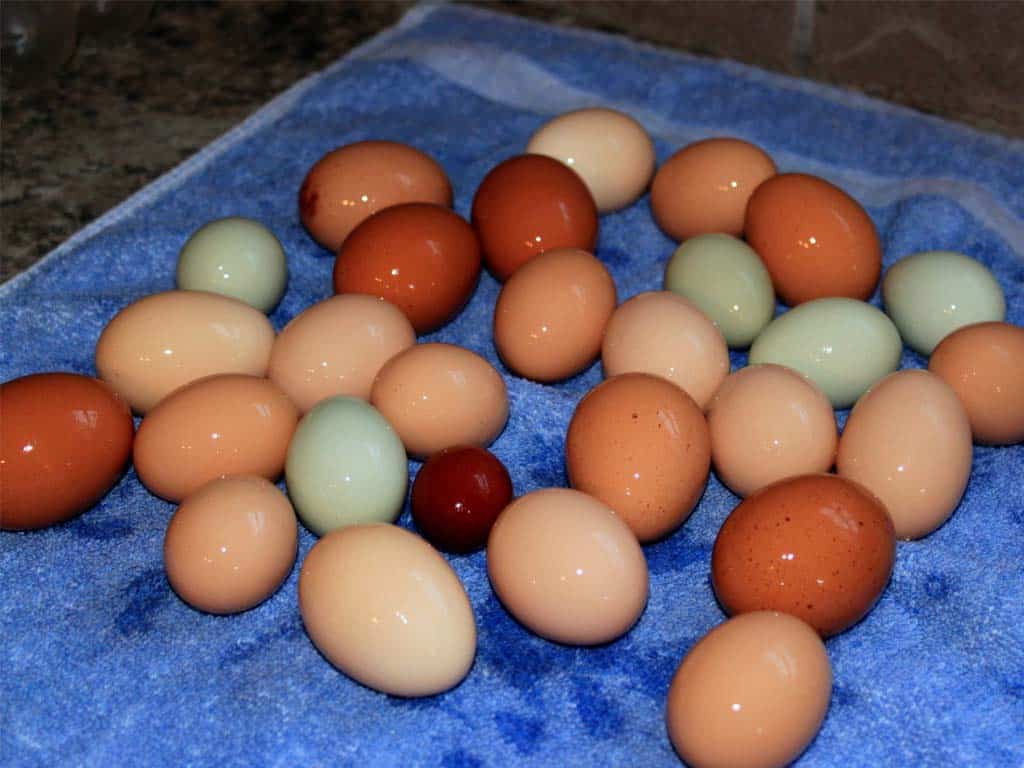
One of the standout features of Easter Egger Chickens is their egg production and the beautiful range of egg colors they provide. Easter Eggers start laying around 20 to 25 weeks old, producing medium-sized eggs in a variety of blue, green, pink, tan, and olive colors. This diversity in egg color is a result of their mixed genetics, making Easter Eggers highly popular among backyard keepers looking for a rainbow of colored eggs.
Typically, Easter Eggers lay 200 or more eggs annually, averaging 4 to 5 eggs per week. The egg color a hen will lay is determined genetically and generally stays the same throughout her life. To compare Easter Eggers with other egg-laying chickens, the following table offers insight into their production rates and egg color variety:
| Chicken Breed | Average Egg Production | Egg Colors |
| Easter Egger | 200+ eggs per year | Blue, green, pink, tan, olive |
| Ameraucana | 150-200 eggs per year | Blue |
| Rhode Island Red | 250-300 eggs per year | Brown |
| Leghorn | 280-320 eggs per year | White |
| Olive Egger | 180-200 eggs per year | Shades of green, olive |
Easter Eggers may not outlay high-production breeds like Leghorns, but they make up for it with their multicolored eggs that offer an eye-catching egg variety in any egg basket.
Check this out Do hawks attack people? why are hawks Aggressive to people?
Easter Egger Chicken Behavior and Temperament
Easter Egger Chickens are known for their chicken traits that make them friendly, gentle, and easy to manage. They are curious birds with individual personalities that many chicken keepers find entertaining. Easter Eggers are social animals, enjoying the company of both people and other chickens. They rarely exhibit aggressive behavior, which makes them suitable for backyard flocks and small farms alike.
These chickens are also relatively quiet compared to some other breeds, though they may cluck or chirp softly, especially when laying eggs. In terms of broodiness, Easter Egger hens are not known to be excessively broody, which is an advantage for those primarily interested in egg production rather than breeding. Overall, these easy-going chickens add a lighthearted presence to any flock and can even become friendly with their owners, making them ideal for families and beginners.
Health, Hardiness, and Common Risks
Easter Eggers are celebrated as hardy chickens that can adapt well to different climates, from cold weather to hot summers. With their genetic diversity, they are often more resilient than purebred chickens, handling cold winters as low as -22°F with wind chill as well as summer heat up to 90°F. Their adaptability makes them one of the more sturdy birds among backyard chickens, suited for varied environments across the USA.
Although Easter Eggers are typically healthy, they can be prone to some common health issues if their chicken coop care isn’t maintained. Mites, respiratory infections, and digestive issues are possible but can be avoided with routine coop maintenance and shelter care. Ensuring a clean, dry coop with proper ventilation helps prevent these issues. They should have 3 to 4 square feet of coop space per bird and 10 square feet of run space to keep them active and stress-free, promoting their overall health and productivity.
Care and Housing for Easter Eggers
Like all chickens, Easter Eggers thrive when their housing and care needs are met. They require a clean coop with ample ventilation and enough space to move freely. A typical chicken coop should have at least 3 to 4 square feet per chicken, and outdoor areas or runs should provide 10 square feet per bird to allow for foraging and exercise. Proper coop management ensures a happy, healthy flock with minimal stress, encouraging regular egg production.
A balanced diet is crucial for Easter Eggers. High-quality poultry feed with ample protein and calcium will ensure they maintain a strong egg output. Fresh vegetables and grains make great treats, while fresh water should always be accessible. Shelter care becomes especially important in winter to protect them from cold winds and freezing temperatures. Easter Eggers may also enjoy dust baths in their coop or run, helping them stay clean and ward off parasites naturally.
Check this out Crane Vs Heron – The Complete Comparison
Easter Eggers in Meat Production

While Easter Eggers are mainly kept for their multicolored eggs, some keepers consider them for meat production as well. However, they are smaller birds, with hens reaching about 4 pounds and roosters about 5 pounds, making them a light option for dual-purpose use. Easter Eggers are better suited as egg-laying chickens rather than meat birds, as their bodies do not yield as much meat compared to dedicated meat breeds like the Cornish Cross.
Some people raising backyard chickens prefer Easter Eggers for both egg production and, occasionally, meat purposes, especially when space or budget limits the types of chickens they can keep. Their meat is lean and flavorful, though other breeds may be more efficient if meat production is the primary goal.
Are Easter Egger Chickens Right for You?
For those seeking a friendly, quirky chicken with excellent egg variety and personality, Easter Eggers are a wonderful option. They’re a great match for people wanting colorful eggs without extensive care requirements
. Easter Eggers are hardy and versatile, making them ideal for backyard flocks in both urban and rural settings. They also require less maintenance than more sensitive heritage breeds, making them perfect for beginners.
Yet, Easter Eggers may not be suitable for those focused solely on meat production or extremely high egg output. While they lay beautiful eggs, other breeds like Leghorns or Rhode Island Reds produce more eggs annually. If you’re after colorful egg baskets and a laid-back chicken with a cheerful personality, though, Easter Eggers are a fantastic choice.
Check this out Silkie Chicken Breed: The Ultimate Guide
Breeding Easter Egger Chickens
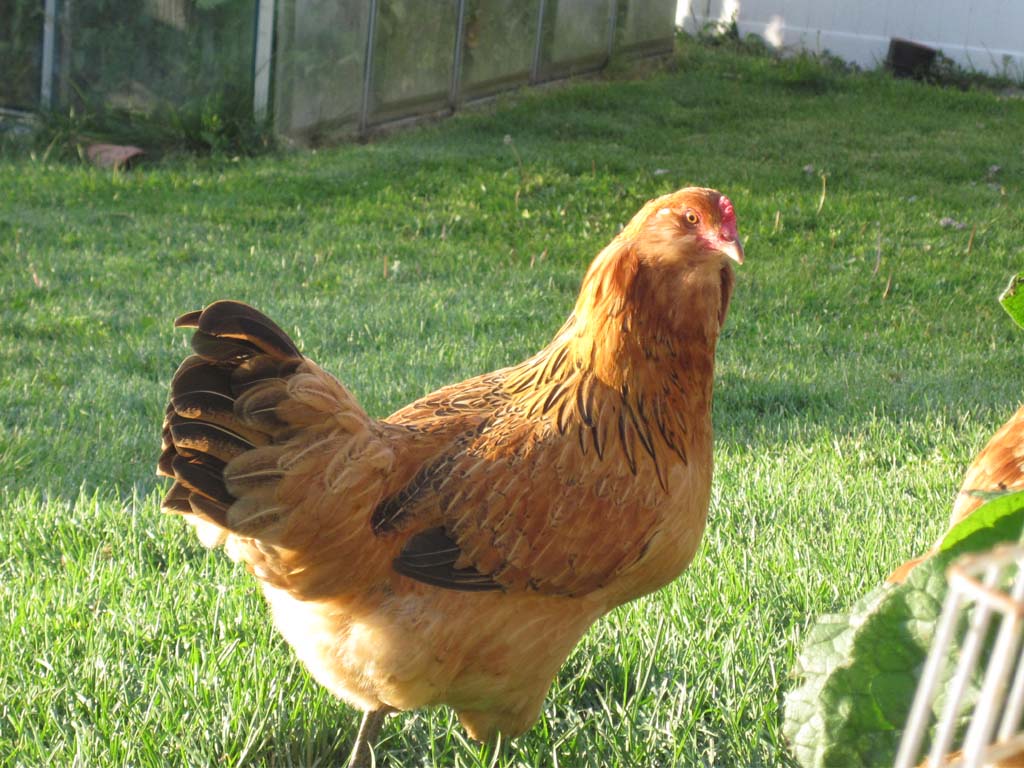
Breeding Easter Eggers is a rewarding experience, though it’s important to remember they’re hybrids and not a true breed. When Easter Eggers are bred, the resulting chicks may have different traits, egg colors, and personalities due to the genetic variety. Crossbreeding Easter Eggers with other chickens, like Ameraucanas or Legbars, can help maintain the blue egg trait while potentially adding even more colors to their egg basket.
To breed Easter Eggers successfully, keepers must monitor chicken genetics and understand that each chick can inherit traits unpredictably. This diversity adds charm but may not yield uniform results. Many backyard breeders enjoy the surprise factor Easter Egger chicks bring, enhancing both poultry keeping and the range of egg colors.
Check this out Blue Jay Spiritual Meaning
Conclusion
Easter Egger Chickens bring vibrant personality and a unique splash of color to any backyard flock. With their ability to lay multicolored eggs in shades like blue, green, and pink, they are a favorite among chicken enthusiasts. This hardy, easy-going breed adapts well to diverse climates, making it suitable for beginner and experienced keepers alike. While not ideal for high egg production or meat purposes, Easter Eggers offer diversity and beauty in both appearance and egg color, making them an excellent choice for those who value variety in their flocks.

